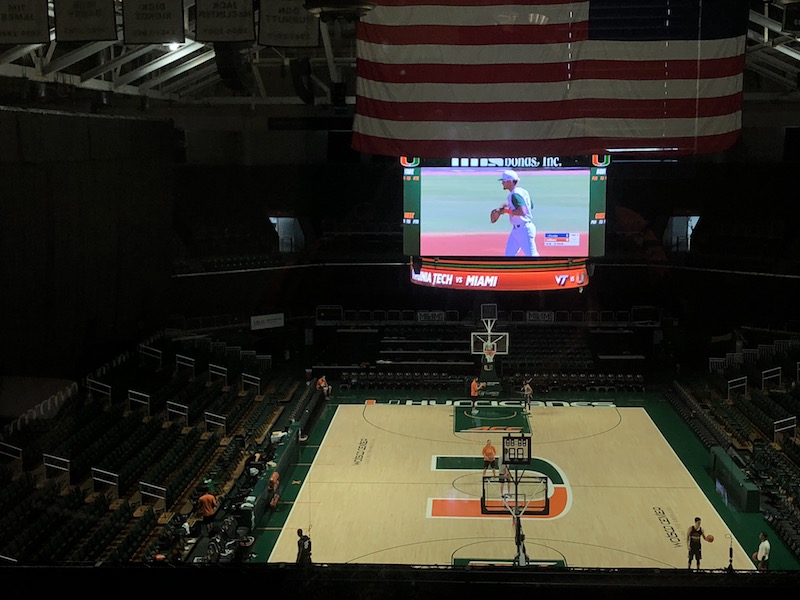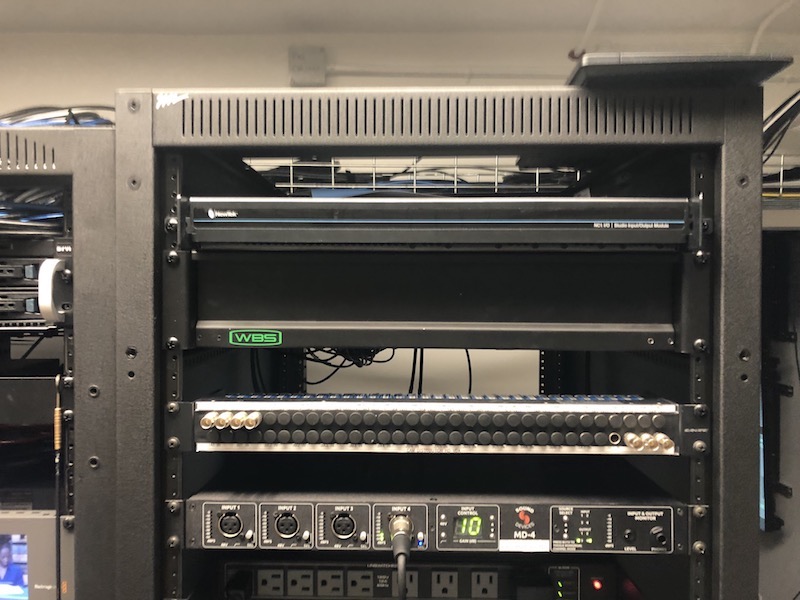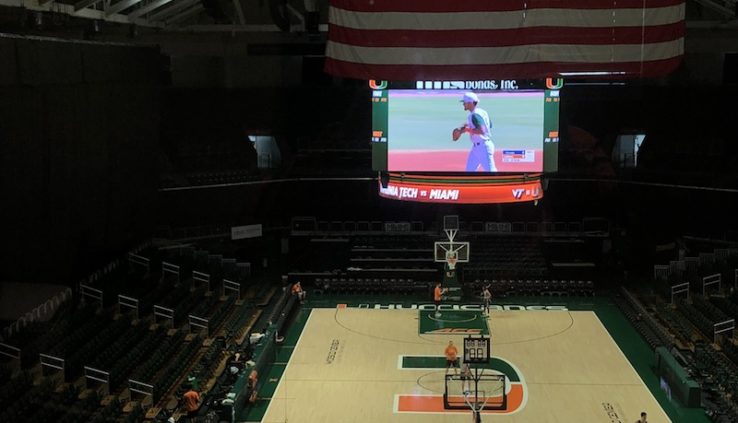Hurricane-Force Video Production at the University of Miami
By Adam Noyes
As befits a university with an active sports program, the University of Miami’s Athletic Department has a busy Video Productions Services team. The Miami Hurricanes compete in the Atlantic Coast Conference (ACC) with games and events digitally broadcast on ESPN College Extra and ESPN3. From five UM venues, Miami Hurricanes’ men’s and women’s basketball, baseball, women’s soccer, women’s volleyball, tennis and track and field, digital broadcasts, along with in-game, in-venue video board shows, are produced in-house, mainly by students from UM’s School of Communication led by a professional staff of three.
“We wear a lot of hats,” says Anthony Lestochi, Manager, Video Production Services.

The Video Production Services staff produce and direct productions, while UM students staff all production positions for camera operation, graphics and replay. Six to eight students are involved for smaller events, while 15 to 20 students are involved on larger productions (Miami Hurricanes football is played at Hard Rock Stadium, home of the NFL’s Miami Dolphins, with outside broadcast truck crews and stadium staff handling production).
UM runs a 1080i video infrastructure, with Panasonic AK-HC3800 and AK-HC5000 HD cameras capturing images. “Our largest production would be a men’s basketball game,” says Lestochi, “which would require a minimum of four cameras. We would have in-game venue show production going on at the same time, which would usually have three dedicated cameras – so that’s at least seven. We try to use eight or nine, and we have the ability to go up to ten.”
In the main UM control room, a pair of Panasonic video switchers are used in in tandem, allowing two broadcasts to run simultaneously. A NewTek TriCaster® TC1 multi-camera production system is used for production of video board shows at the Watsco Center on UM’s Coral Gables campus for men’s and women’s basketball. A TriCaster TC 410 is in use at the main campus’ Alex Rodriguez Park at Mark Light Field for video board production.
SMPTE protocol video over IP is used for control room and venue interconnection. “We’re converting SMPTE to single mode fiber and that’s all being transported back to a central location,” Lestochi elaborates. “We have a really robust single mode fiber infrastructure to get us venue to venue.” Camera signals are split in a video DA and routed to the control room switchers for broadcast.
Camera signals also feed a NewTek NC1 Studio I/O Module for conversion to NewTek’s NDI® networked video and control over IP protocol. UM uses NDI (Network Device Interface) video to return video content to the venues where the TriCasters can ingest the content.
“We did the entire in-game for men’s and women’s basketball using the NC1,” shares Lestochi. “We use it essentially as an NDI router. It’s saved us a couple of times. The way our control room is set up, I don’t think it was possible to do the broadcast without the NC1, just because of the nature of how flexible it is for us. It’s very robust. We would had to have bought a lot more equipment, repeaters and relays and essentially duplicating video signal just to get it to the right location. The fact that the NC1 can convert from NDI to SDI as well as SDI to NDI is also huge. A replay operator at one facility can pull replays from anywhere because of the NC1. If there’s multiple events going on, we essentially use the NC1 as a bad-ass router.”

Housed in a 1RU chassis, the NC1 Studio I/O module offers up to eight channels of 3G/HD/SD-SDI I/O on BNC and two 1-Gigabit Ethernet ports with eight channel audio including support for Dante, AES67, and ASIO sound devices.
“It really isn’t fancy,” says Lestochi. “It’s reliable. It does exactly what it says it does and it does it well, which is important. It efficiently, economically and flexibly met a lot of needs for signal flow as that flow varies between multiple locations and multiple events.”
When faced with multiple simultaneous, or back-to-back, events “flipping a couple of video switches” keeps the video content flowing where needed, he states.

The NC1’s scaling capabilities have proven helpful, especially during track and field events where a third-party timing company is providing an official time video signal. With no standard for such signals, being able to convert whatever resolution is provided to UM’s 1080i infrastructure keeps the interface simple. The scaling capabilities have also proven useful when a visiting school needs a different format game program feed for a game recorder. With the NC1 genlocked to the UM control room master clock, the NC1 is also called upon for clock distribution. While the NC1’s native recording capability is infrequently used at UM, “It also has a cool little play out function as well,” says Lestochi, allowing its use as a clip player.
While not all UM sports venues and events have video board shows, “all of them do get broadcast,” says Lestochi. “We try to do every one.” That makes for a constantly busy video production operation and a fertile training ground for students. “We’re a smaller school,” Lestochi concludes. “That means we have to really use our resources to their biggest potential.”

